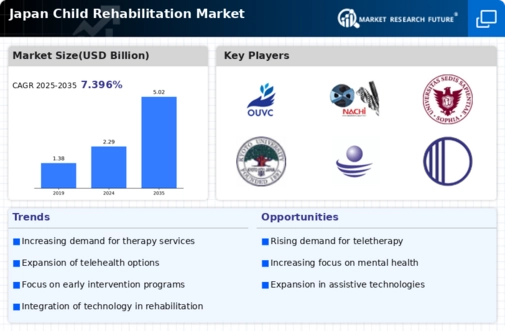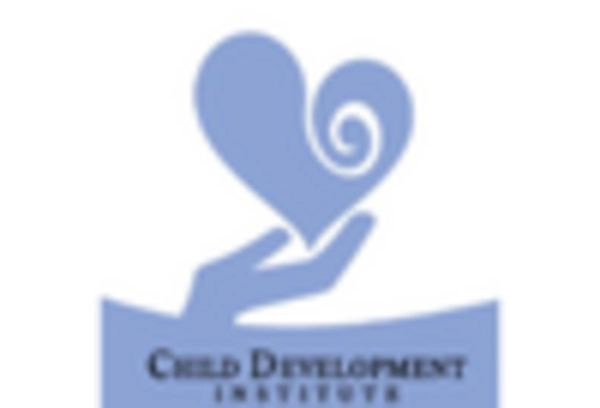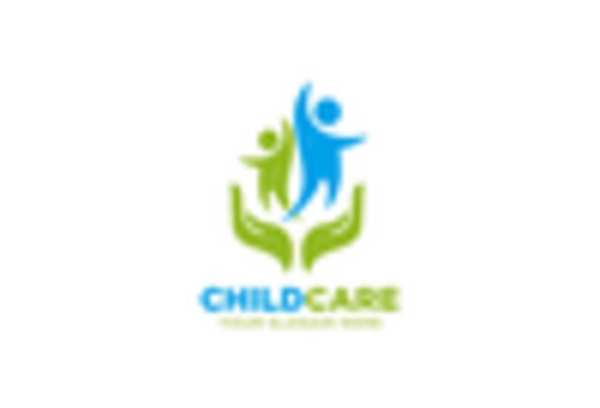Government Initiatives and Funding
Government initiatives aimed at improving child health and welfare in Japan are likely to play a crucial role in the child rehabilitation market. The Japanese government has allocated substantial funding to enhance healthcare services for children, including rehabilitation programs. In recent years, the budget for child welfare has seen an increase of approximately 10%, reflecting a commitment to addressing the needs of children with disabilities. These initiatives often include subsidies for families seeking rehabilitation services, which may alleviate financial burdens and encourage more families to seek help. Additionally, public awareness campaigns funded by the government are likely to educate parents about available services, thereby increasing the overall demand for child rehabilitation services.
Cultural Shifts Towards Mental Health
Cultural shifts in Japan regarding mental health awareness are emerging as a vital driver for the child rehabilitation market. Historically, mental health issues have been stigmatized, but recent efforts to promote mental well-being are changing perceptions. This shift is likely to encourage families to seek rehabilitation services for children experiencing emotional and behavioral challenges. Surveys indicate that over 60% of parents now recognize the importance of mental health support for their children, which may lead to increased utilization of rehabilitation services. As societal attitudes continue to evolve, the child rehabilitation market is expected to benefit from a growing acceptance of mental health care as an essential component of overall child development.
Growing Demand for Inclusive Education
The push for inclusive education in Japan will significantly impact the child rehabilitation market. As educational policies evolve to accommodate children with special needs, schools are increasingly seeking partnerships with rehabilitation professionals to support these students. This trend suggests a growing recognition of the importance of integrating rehabilitation services within educational settings. Approximately 30% of schools in Japan are now implementing inclusive practices, which may drive demand for specialized rehabilitation services. The collaboration between educators and rehabilitation specialists is expected to create a more supportive learning environment. This will ultimately benefit children with disabilities and foster their academic and social development.
Advancements in Rehabilitation Techniques
Innovations in rehabilitation techniques and therapies are emerging as a pivotal driver in the child rehabilitation market. In Japan, the integration of evidence-based practices, such as cognitive-behavioral therapy and play therapy, is becoming more prevalent. These advancements are supported by ongoing research and development, which suggests that tailored interventions can lead to improved outcomes for children with various disabilities. The child rehabilitation market is witnessing a shift towards more personalized treatment plans, which may enhance the effectiveness of rehabilitation efforts. Furthermore, the introduction of new technologies, such as virtual reality and teletherapy, is likely to expand access to rehabilitation services, particularly in rural areas where specialized care may be limited.
Increased Awareness of Developmental Disorders
The rising awareness of developmental disorders among parents and educators in Japan appears to be a significant driver for the child rehabilitation market. As more families recognize the signs of conditions such as autism spectrum disorder and attention deficit hyperactivity disorder, the demand for specialized rehabilitation services is likely to increase. Reports indicate that approximately 1 in 68 children in Japan are diagnosed with autism, which underscores the necessity for effective intervention strategies. This heightened awareness is fostering a culture where early diagnosis and rehabilitation are prioritized, thereby propelling the growth of the child rehabilitation market. Furthermore, educational institutions are increasingly collaborating with rehabilitation professionals to create supportive environments for affected children, which may further stimulate market expansion.

















Leave a Comment